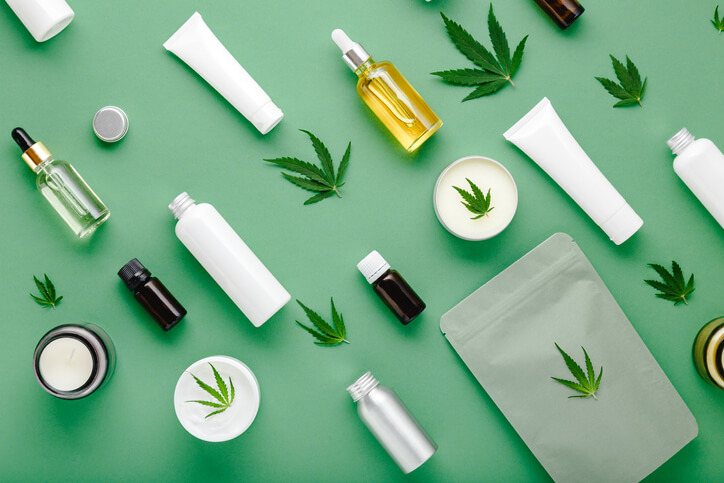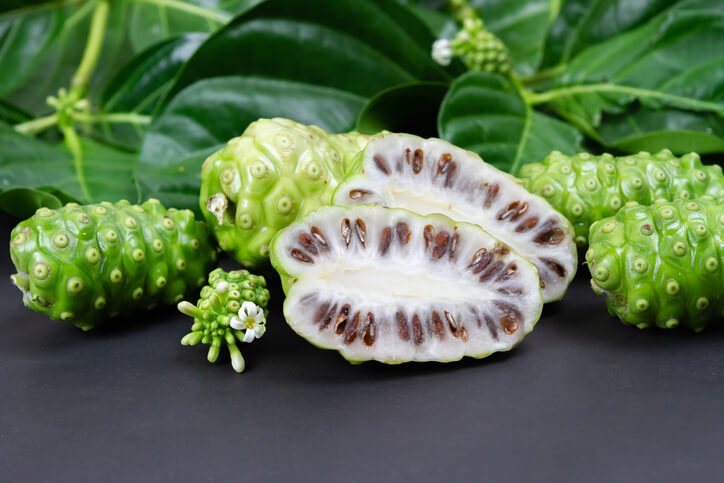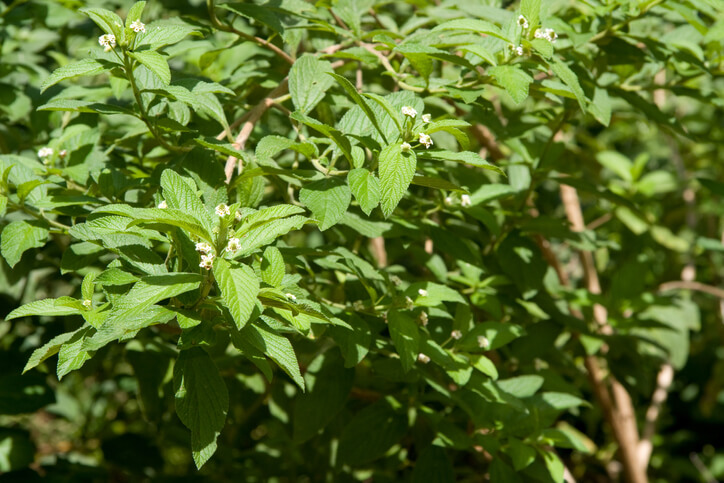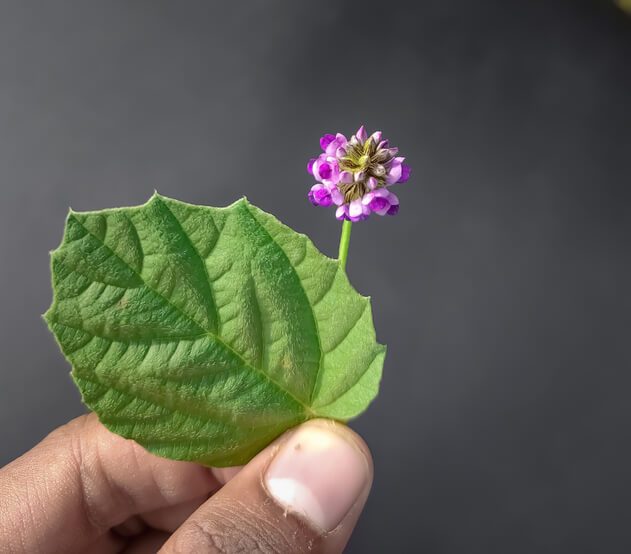In this article, I have provided information on acne treatments that really work. You’ll notice below 5 UNIQUE (non-animal based) organic ingredients, namely;

- Mushroom
- Noni extract
- CBD
- Zumbani
- Bakuchiol
There’s a revolution in the cosmetic industry, as more people are becoming increasingly health conscious. This has prompted a huge shift towards organic skincare. As for vegans who don’t want ANYTHING to do with animal sources for skincare, this perspective presents you with UNIQUE ingredients that don’t have their origin in animals
Now, let’s get to the crux of these unique VEGAN friendly ingredients.
Related Article: Acne Treatments That Really Work – 4 Unique Organic Ingredients (Part 1)
Mushroom

Mushroom provides you with powerful ingredients that are vegan friendly.
For centuries, Mushrooms have had tremendous nutritional and health significance due to its active metabolites.
I like mushroom due to its texture and flavor as food. Its benefits and delicacy as food have been nothing short of nourishing and tasty.
Mushrooms are neither plant nor animal. They are fungi that belong to a higher phyla – Ascomycota and Basidiomycota.
In recent times, Mushrooms have been explored greatly for its benefits in cosmetic industry.
Potent active metabolites (including phenols and polysachharides) contained in mushrooms are protein, vitamins, minerals, niacin, thiamine, riboflavin and folic acid etc. Mushrooms extracts utilized in cosmetics are ceramides, omega 3, 6 and 9 fatty acids, carotenoids, selenium, kojic acid, schyzophyllan and lentinan etc. These ingredients provide mushroom with its cosmeceutical benefits for skin and hair
7 Benefits of mushrooms include;
- Powerful antioxidant and anti-inflammatory (suitable for treating many inflammatory diseases including acne).
- Antibacterial effect.
- Natural moisturizers – hydrates and smoothens dry and flaky skin.
- Natural skin lightening.
- Fights off some signs of aging such as fine lines, wrinkles.
- Improves skin texture and elasticity.
- helps with regenerating new skin cells.
Mushrooms extracts are used in skin and hair products.
Noni extracts

In some context, you may have come across the saying “no part goes to waste”. This is real with Noni tree!
For centuries, the fruit, seed, juice, root and bark have been utilized as traditional medicine by Aboriginal Australians, South-east Asia etc.
Recently, many more places (such as South America and Central America etc.) are beginning to cultivate Noni tree.
In cosmetic industry, the benefits from the various extracts of Noni tree have been explored further. Thanks to the compound groups contained in Noni tree generally. These compound groups include alkaloids, phenols, tannins, favenoids and saponins.
As for the various extracts, let’s look at the fruits and leaves.
Noni leaves contain alkaloids, minerals, vitamins and amino acids that can inhibit the growth of bacteria. Other the hand,
Noni fruits contain compounds that are effective against microbes (e.g. Candida albicans, P. acne and Shingela dysteria and Staph. aureus etc.). These compounds include alizarin, anthraquinone, Akubin and scopoletin.
6 Benefits of Noni extracts include
- Antioxidant and anti-inflammatory.
- Anti-microbial (i.e. against acne causing bacteria and other bacteria, fungi and virus).
- Analgesic.
- Antitumor,
- immune booster.
- And also found to provide some cardiovascular benefits.
Since conventional treatment with antibiotic can lead to resistance, this looks like a prospective replacement for it.
CBD

In cosmetics, the benefits of CBD (abbreviation for cannabidiol) oil include maintenance of skin barrier, cell growth and differentiation, wrinkle reducing, anti-inflammatory, hydrating and moisturizing etc.
You CANNOT get high from CBD and it could potentially stop you from getting high from THC (tetrahyrocannabinol). This is because CBD is non-psychoactive and anti-psychoactive.
Are you confused? Let me shed a bit of light…
When you hear CB, CBD, Cannabis, THC, Hemp and Marijuana what do you think?
Cannabinoids (CB) are compounds that can ONLY be NATURALLY found in a plant genus called Cannabis. Apart from this external natural source of CB, the body can internally bio-synthesize CB. And of course, with the advancement of science, CB can be synthetically manufactured.
Two examples of Cannabis plants are as industrial hemp (or hemp) and marijuana.
It’s IMPORTANT you gasp a key difference between these two plants in order to understand their RELEVANCE in cosmetics.
So how is Industrial Hemp different from Marijuana?
Industrial hemp and Marijuana have two ingredients. Industrial hemp is high in CBD and low in THC, while Marijuana is low in CBD and high in THC. THC is psychoactive and it’s what can get you high. So in industrial hemp, the THC content is so low that you cannot get high from it. For example, European hemp contains 0.3 per cent or less of THC. This does not have any practical significance.
Since hemp plant contains a high amount of CBD, it makes it more suitable for extraction. Manufacturers use Carrier oil to make CBD oil.
8 Benefits of CBD for the skin include;
- Has protective property – protects the skin integrity.
- Reduces excessive sebum production – reducing acne.
- Potent anti-inflammatory/antioxidant property – helps with treating inflammatory acne, eczema, pruritis, psoriasis etc.
- Combats signs of aging – thanks to its powerful antioxidant property.
- Soothes sensitive skin – due to its antioxidant and anti-inflammatory property.
- Reduces pain for specific conditions – circumvents the CNS, hence making it tolerable without causing negative effects associated with CNS effects.
- Associated with faster wound healing and less blistering.
- Enhances skin barrier function and immunity.
Zumbani

Zumbani (scientifically known as Lippia javanica) is an edible plant that’s native to Central, Eastern and Southern Africa (e.g. Congo, Kenya, South-africa and Zimbabwe etc.). It has also reported in subcontinent India.
It is used by the natives to make concoction or decoction such as herbal tea, leaf infusion.
For centuries, the natives have been tapping into the nutritional and nutraceutical benefits of Zumbani.
Nutraceutically, the natives use it to treat various health issues including cough, cold, fever, asthma, wounds and skin infections. Although not recognized as a mainstay treatment for COVID 19, it recently made headlines for its used to treat COVID 19.
Zumbani is under utilized globally. There’s been growing scientific interest in this plant, as its benefits have been elaborated by a body of research.
However, let me say that more research is still needed to establish its safety, phytochemistry and biological properties. I believe this is necessary to better understand how it works, explore its benefits further and determine acceptable doses that are safe for use
Beneficial compounds that have been detected in Zumbani include phenolic glycosides, flavonoids, terpenoid and essential oils etc. It also contains minerals such as calcium, magnesium, iron, manganese and zinc.
These have been known to be safe. However, toxic substances such as icterogenin and xanthine have also been isolated.
8 Benefits of Zumbani (L. javanica)
- Antioxidant – mainly due to phenols.
- Anti-inflammatory
- Antimicrobial
- Cellular regeneration – due to some of its minerals
- Analgesic
- Some scientific studies have also showed that Zumbani displayed the following; anti-diabetic, cardio-protective, anti-cancer and hepatoprotective effects etc.
- Recent use of Zumbani as a MAIN INGREDIENT in organic skincare product for acne.
What recently caught my attention about this Zumbani plant was its recent use in the manufacture of an organic skincare product for acne. See related article link below.
Due to the vast number of powerful ingredients contained in Zumbani which are effective against a number of diseases, this plant holds a place in the future of effective and safe acne treatments. More research and utilization is needed!
RELATED ARTICLE: Bulawayo Woman Manufactures Organic Skin Care for Acne.
Bakuchiol

Bakuchiol is extracted from the seeds and leaves of a plant called Psoralea corylifolia. It’s popular among the Ayurvedic and Chinese medicine communities. Also grown throughout India.
Count yourself lucky for the discovery of Bakuchiol if you have sensitive skin. You may already know that Retinoids are one of the most effective ingredients out there that help slow down aging process. However, this comes at a cost for people with sensitive skin.
Let’s compare Bakuchiol and Retinoids.
The pathways and benefits of Bakuchiol are similar to Retinoids but without the cosmetic intolerance syndrome (such as burning, itching, stinging etc.) that Retinoids have.
Both Bakuchiol and Retinoids down-regulates the formation of the enzyme that play a role in excessive sebum production. Their effectiveness in doing so has been shown to be the same.
Bakuchiol also shows broad spectrum antibacterial and anti fungal activity. It’s effective in inhibiting P. acne. Retinoids, on the other hand lacks the ability to do so.
Bakuchiol act like Retinoids in regulating the process of aging and wrinkle formation. Although similar, Bakuchiol has been shown to be more effect in the aspect that has to do with inhibiting matrix metalloprotease (MMP). Thanks to their powerful antioxidant effect.
Unlike Retinoids, Bakuchiol is photostable. It is not phototoxic requiring the use of sunscreen when compared to Retinoids. So if you have photosensitivity, Bakuchiol seems like a better option, as it prevents photoaging and does not damage the skin barrier
8 Benefits of Bakuchiol for skin;
- Antioxidant/Anti-inflammatory.
- Reduces excessive sebum production.
- Inhibits acne-causing bacteria (P. acne)
- Broad antibacterial/anti fungal effect
- Hydrates/Moisturize
- Slows down aging
- Anti-wrinke effect
- enhances the effects of other moisturizing agents e.g. natural glycerin, beewax and sunflower oil etc.
Bakuchiol is used as an adjuvant treatment for acne.
It will be worth mentioning that at 4 weeks of use, Bakuchiol can yield the desired results without experiencing cosmetic intolerance syndrome. The desired results that can be seen include clarity, smoothness, radiance and anti-aging.
Conclusion: my thoughts on the 5 unique vegan-friendly ingredients
Mushrooms, Noni extracts, CBD, Zumbani and Bakuchiol have all shown remarkable cosmeceutical benefits. These benefits span from having nutritional values to treating conditions/diseases (including acne) and enhacing one’s skin appearance.
Out of excitement, I may have provided a lot of information on these ingredients that exist as acne treatments that really work, but certainly not too much.
This areas of excitments for acne treatments are worth exploring further and utlized even more in a safe and effective manner.
The fact that they are all vegan friendly, makes them even more attractive to vegans and health-minded individuals who are also looking at achieving the best results.
I like to hear your thoughts. Please leave your comment below and I’ll get back to you ASAP.
References
Baswan, S. M., Klosner, A. E., Glynn, K., Rajgopal, A., Malik, K., Yim, S., & Stern, N. (2020). Therapeutic potential of Cannabidiol (CBD) for skin health and disorders. Clinical, cosmetic and investigational dermatology, 13, 927. DOI: 10.2147/CCID.S286411′
Chaudhuri, R. K., & Marchio, F. (2011). Bakuchiol in the management of acne-affected skin. Cosmetics and toiletries, 126(7), 502.
Draelos, Z. D., Gunt, H., Zeichner, J. & Levy, S. (2020). Clinical Evaluation of a Nature-Based Bakuchiol Anti-Aging Moisturizer for Sensitive Skin. Journal of Drugs in Dermatology, 19(12):1181-1183. DOI: 10.36849/jdd.2020.5522. PMID: 33346506.
Maroyi, A. (2017). Lippia javanica (Burm. f.) Spreng.: traditional and commercial uses and phytochemical and pharmacological significance in the african and indian subcontinent. Evidence-Based Complementary and Alternative Medicine, 2017.
Sogandi, S., Fitrianingrum, M., & Thursina, A. (2020). Identification of Bioactive Compounds and Antibacterial Activity of Noni Leaf Extract (Morinda citrifolia L.) as Propionibacterium acne Inhibitor. Health Research Bulletin,48(1). https://doi.org/10.22435/bpk.v48i1.2338.
Sujarit, K., Suwannarach, N., Kumla, J., & Lomthong, T. (2021). Mushrooms: Splendid gifts for the cosmetic industry. Chiang Mai J. Sci, 48, 699-725. Mushrooms-Splendid-Gifts-for-the-Cosmetic-Industry.pdf (researchgate.net)
West, D. P. (1998). Hemp & Marijuana: Myths and Realities. The Council. p. 1-24. Hemp and Marijuana: Myths and Realities (hampaksjonen.no)
Wu, Y., Choi, M. H., Li, J., Yang, H., & Shin, H. J. (2016). Mushroom cosmetics: the present and future. Cosmetics, 3(3), 22. https://doi.org/10.1155/2017/6746071
